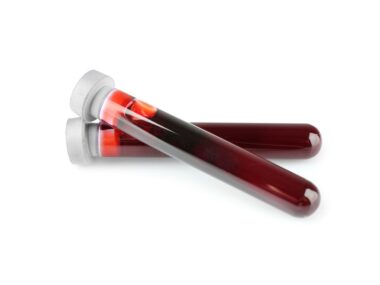Blood Test May Help Diagnose TTP/aHUS in Pregnant Women, Study Finds
Written by |

A blood test may help doctors tell a pregnancy complication called HELLP syndrome from thrombotic thrombocytopenic purpura (TTP) and atypical hemolytic uremic syndrome (aHUS), a small study found.
The test measures the ratio of two proteins — lactate dehydrogenase (LDH) to aspartate aminotransferase (AST) — that signify damage to tissues in the body. The researchers observed that the LDH:AST ratio was about 30 times higher in women with TTP/aHUS than in those with HELLP syndrome, a pregnancy complication that can result in damage to the kidneys or liver.
These findings support the use of “the LDH:AST ratio as a useful screening tool for clinicians to differentiate TTP/aHUS apart from HELLP syndrome,” the team wrote.
The study, “Maternal morbidity and mortality in pregnant/postpartum women with suspected HELLP syndrome identifiable as probable thrombotic thrombocytopenic purpura or atypical hemolytic uremic syndrome by high LDH to AST ratio,” was published in the International Journal of Gynecology and Obstetrics.
Short for hemolysis, elevated liver enzymes, and low platelets, HELLP syndrome is a pregnancy complication that can lead to kidney and liver damage. It usually occurs toward the end of pregnancy, or soon after childbirth, and is marked by the destruction of red blood cells (hemolysis), an increase in liver enzymes, and a reduction in platelet counts.
The condition can be difficult to diagnose, because not all signs may be apparent and some other diseases may present overlapping features. Examples are TTP and aHUS, two disorders characterized by the formation of blood clots in small blood vessels. For doctors, it remains a challenge to distinguish TTP/aHUS from HELLP syndrome.
However, “it is important to facilitate correct and timely decisions regarding diagnosis and management of these conditions,” the researchers wrote.
The scientists built on previous observations that women with TTP have a high LDH:AST ratio — one that always exceeds 22:1. Now, they set out to determine whether the LDH:AST ratio could help distinguish TTP/aHUS from HELLP syndrome.
The study included 58 women who were pregnant or had just delivered their baby, and were suspected of having HELLP syndrome. Of these, eight had TTP/aHUS characterized by severe thrombocytopenia, or abnormally low numbers of platelets at admission. Specifically, their platelet counts were less than 20,000 per microliter of blood.
The women had a mean age of 26.4 years, and their babies were born at a mean gestational age of 35.4 weeks.
Six of the women received a diagnosis of TTP/aHUS before labor. Four underwent plasma exchange and one survived; the other two women died before plasma exchange treatment could be started. Plasma exchange is a form of treatment that involves replacing a patient’s plasma — the clear liquid component of the blood.
The other two women received a diagnosis of TTP/aHUS three to five days after giving birth. They also had severe thrombocytopenia and high levels of LDH. One of the women underwent plasma exchange; the other did not survive.
When researchers looked back at LDH and AST levels, and calculated the mean LDH:AST ratio, they found that it was 32:1, greatly exceeding the 22:1 ratio previously reported. In turn, the mean LDH:AST ratio of the 42 women with confirmed HELLP syndrome was 2:1. These women had a mean age of 29, and their babies were born at a mean gestational age of 34 weeks.
The takeaway from the data was clear, according to researchers: In women with suspected HELLP syndrome, doctors should calculate the LDH:AST ratio.
That calculation should be made in addition to measuring the number of platelets and the activity of a protein called ADAMTS13, which is used to distinguish TTP from aHUS, the team noted.
“Implementation of the suggested screening pathway likely could shorten the detection to treatment time,” they wrote, adding that this step could “reduce the likelihood of major maternal morbidity and maternal mortality.”






